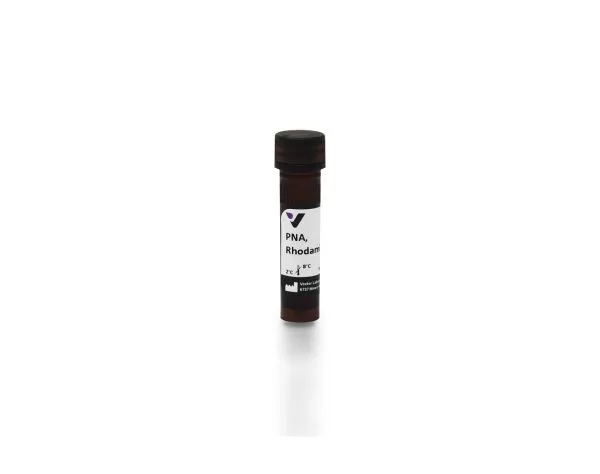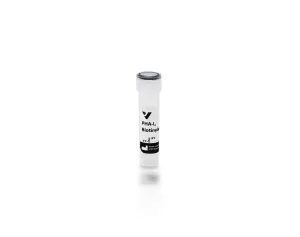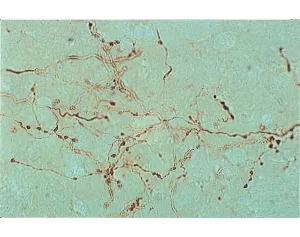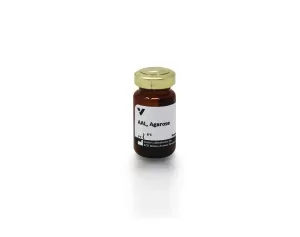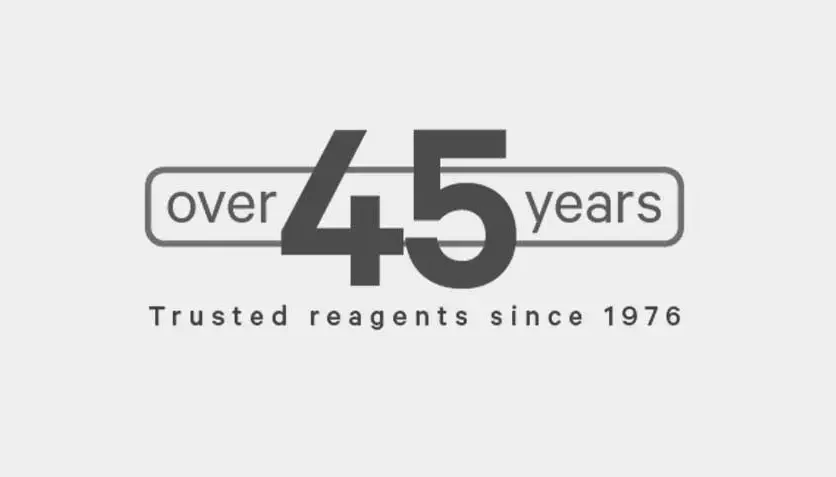Description
Peanut agglutinin binds preferentially to the T-antigen, a galactosyl (β-1,3) N-acetylgalactosamine structure present in many glycoconjugates such as M and N blood groups, gangliosides, and many other soluble and membrane-associated glycoproteins and glycolipids. With certain exceptions, the receptor sequence for PNA is normally sialylated which prevents the lectin from binding to its receptor oligosaccharide (see Jacalin). Even sialic acid which is not bound directly to the receptor sugars may inhibit binding. The presence of calcium ions in diluents can enhance the binding of PNA to receptors, possibly by neutralizing the negative charges on sialic acid residues adjacent to the receptor sequence.
Rhodamine labeled Peanut agglutinin has an appropriate number of fluorochromes bound to provide the optimum staining characteristics for this lectin. This conjugate is supplied essentially free of unconjugated fluorochromes. The excitation maximum is at 550 nm and the emission maximum is at 575 nm.
Specifications
More Information| Unit Size | 5 mg |
|---|
| Applications | Immunofluorescence, Glycobiology |
|---|
| Recommended Usage | The recommended concentration range for use is 5-20 µg/ml. |
|---|
| Recommended Storage | 2-8 °C |
|---|
| Maximum Excitation | 545-555nm |
|---|
| Inhibiting and/or Eluting Sugar | 200 mM galactose (S-9003) |
|---|
| Maximum Emission | 570-580 nm |
|---|
| Solution | 10 mM HEPES, 0.15 M NaCl, pH 7.5, 0.08% sodium azide, 0.1 mM CaCl2 |
|---|
| Concentration | 5 mg active conjugate/ml |
|---|
| Conjugate | Rhodamine |
|---|
| Color of Fluorescence | Red |
|---|
| Sugar Specificity | Galactose |
|---|
Technical Information
PNA is useful in distinguishing between normal and tumor tissues and in assessing malignancy in transitional mucosa. In addition, PNA binding can be used to measure cellular maturity in lymphoid tissues, to distinguish a variety of lymphocyte subpopulations in man and experimental animals, and to measure the levels of lymphoid cell populations in many diseases. PNA can be employed in the fractionation of stem cells in mice for use in bone marrow transplantation across histocompatibility barriers.
A major cell surface receptor for PNA may be asialo GM1 ganglioside. Since PNA shares specificity with the antibody to this glycolipid, PNA and the antibody can be used interchangeably in some applications.
Accompanying each fluorescent lectin is an analysis data sheet summarizing the results of our quality control tests and providing pertinent information on the product. All of these reagents are supplied as solutions preserved with sodium azide.
Inhibiting/Eluting Sugar: 200 mM galactose

